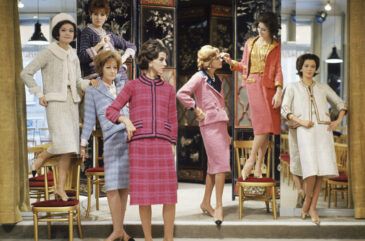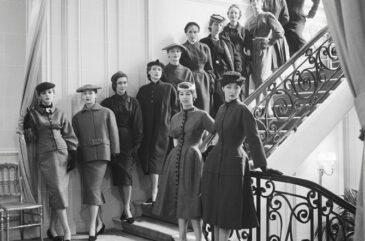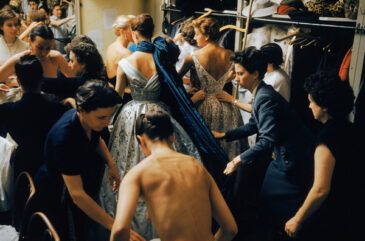No one knows the sartorial power of a good tailor quite like Elizabeth Mason. A regular presence behind the scenes at red carpet events, her fast-working hands perform magic on gowns, refinishing decades-old garments. We tapped the Beverly Hills dealer — whose vintage couture boutique, The Paper Bag Princess stocks everything from ladylike Chanel suits to shearling moto jackets — for tips on giving old clothes a new lease on life. Here’s what she had to tell us.
Ball Skirts
A big trend Mason’s been seeing for spring are ball skirts — but just not any old ball skirt, she stresses, the “great, big, huge skirts.” With ‘50s-style ball gowns, Mason completely removes the upper bodice and turns the rest into a skirt. And since contemporary waistlines are lower, she takes the zipper out, drops the waist and adds a softer line “that just hugs the top of the hips,” she says. As for the bodice? Mason uses the leftover fabric to make a shrug for chilly nights out.
Chanel Suits
To update a wool two-piece from 1992, Mason lopped about six inches off the bottom of the jacket, then used the extra fabric to widen the skirt. Since the customer was petite, Mason removed the jacket pockets to give it a more streamlined look, then later used them to make a crossbody handbag. “We used the same silver chain lining inside of the jacket,” she says.
Silk Blouses
Bring silk items in for a stress test to see if the seams are secure. If not, they can easily be resewn, Mason says. But beware of silk rot, which literally leads to dead threads. If the fabric is fraying, not much can be done.
Flapper Dresses
The Leonardo DiCaprio film may have flopped, but Hollywood still revels in the decadence of the Great Gatsby era. Trouble is, a lot of ‘20s and ‘30s dresses were made with silk and therefore deteriorated over time. “They’re fine for a photograph,” Mason says, “but not for moving around” at a party. As an alternative, she suggests wearing gowns from the ‘80s with beaded Art Deco patterns and narrowing the straps. If there are puff sleeves, you can chop them right off.
Coats
The trick with coats is to “look for any detail that’s dating it,” says Mason. “Today’s body attitude is a little cooler,” she says, so with pockets, for instance, “you don’t want to open the top of a flap and stick your hand down in it, you want to be able to enter it from the side.” Really think about how you move in the garment. Recently, she took a coat pocket, lined it in silk and opened it up on the side. It was a practical change that “didn’t diminish the integrity of the piece,” she says, and the customer loved it.
Knit Dresses
Anything that has a stretch to it can go up or down in size, says Mason, because there’s a lot of give. With ‘60s-era tank dresses, which often came in this fabric, it’s easy to scoop out the neckline and narrow the strap for a more modern look.
Tricks of the Trade
“For a small amount of money, you can really make a piece look incredible,” says Mason. So before you toss something out, ask if it can be fixed. “Think, What can I do to make this current?” she says, or ask what you can add. To sharpen your eye, consider tailoring details such as hem length, shoulder straps, bodice and pleats. Sometimes updating a garment is as simple as moving the shoulder seam and narrowing the arms; other times, it means ditching big shoulder pads. “You know yourself there’s a reason you haven’t worn it,” Mason says, so start there. “We want to be able to give that dress another chance to hit the dance floor.”
Story by Jill Krasny, a New York City-based writer. View more of Jill’s work here.





